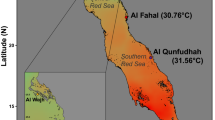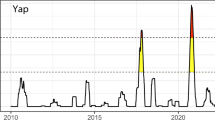Abstract.
'It should be clear that the upper temperature limit for life cannot be accurately defined' (Schmidt-Nielsen 1996). The thermal physiology of zooxanthellate reef corals is reviewed in this paper in the context of organismal and biochemical responses occurring during coral bleaching, with emphasis on methods of detection and interpretation of animal and algal symbiont stress. Coral bleaching, as presently defined in the literature, is a highly subjective term used to describe a variety of conditions pertaining to low symbiont densities in the coral–algal complex, including response to thermal stress. Three general types of high-temperature bleaching are defined: physiological bleaching, which may or may not include higher-than-normal temperature responses; algal-stress bleaching, involving dysfunction of symbiotic algae at high light and/or high temperatures; and animal-stress bleaching, where coral cells containing symbiotic algae are shed from the gastrodermal layer of cells. Since none of these methods of bleaching is mutually exclusive, a combination of intrusive and non-intrusive techniques is necessary to determine which mechanisms of symbiont loss are occurring. While quantification of symbiont densities, algal pigments, and coral tissue biomass provide unambiguous evidence of bleaching severity, measurements of physiological and biochemical degradation offer additional correlative evidence of temperature stress. Pulse-amplitude-modulated (PAM) fluorometry has emerged as an easy and relatively inexpensive non-invasive technique for monitoring symbiotic algal function both in situ and in the laboratory, when proper assumptions and interpretations are made. The roles of global warming, water quality, acclimation/adaptation processes, and relation to coral disease and reef heterogeneity are also discussed. A thorough understanding of the organismal responses occurring during bleaching will help explain changes in coral populations and in the coral reef community, and perhaps assist in predicting the future of reef corals and coral reefs during the next century of global climate change.
Similar content being viewed by others
Author information
Authors and Affiliations
Additional information
Electronic Publication
Rights and permissions
About this article
Cite this article
Fitt, W.K., Brown, B.E., Warner, M.E. et al. Coral bleaching: interpretation of thermal tolerance limits and thermal thresholds in tropical corals. Coral Reefs 20, 51–65 (2001). https://doi.org/10.1007/s003380100146
Received:
Accepted:
Issue Date:
DOI: https://doi.org/10.1007/s003380100146




